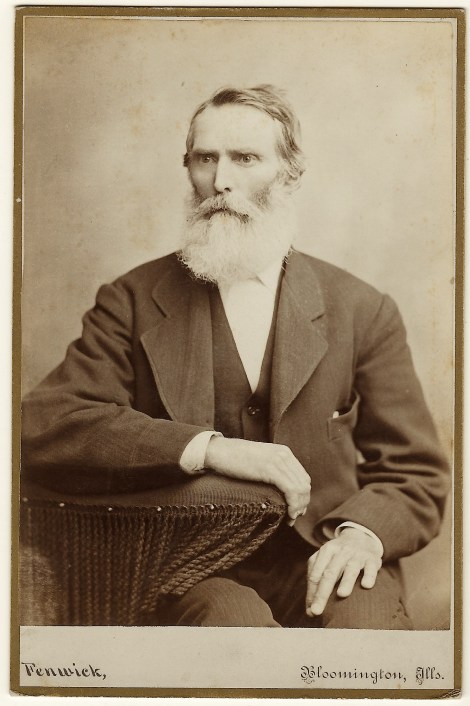
 This cartes de visite portrait features a woman posing for photographer, Louis Martin of Nantes, France. This profile view shows a well dressed and well coiffed subject. The cdv is an example of a bas relief photo (raised image providing a 3 dimensional effect). photograph. Nantes is a city on the Loire River and is located in the Upper Brittany region of western France. This photograph is in very good condition. (see scans).
This cartes de visite portrait features a woman posing for photographer, Louis Martin of Nantes, France. This profile view shows a well dressed and well coiffed subject. The cdv is an example of a bas relief photo (raised image providing a 3 dimensional effect). photograph. Nantes is a city on the Loire River and is located in the Upper Brittany region of western France. This photograph is in very good condition. (see scans).

Buy this original Vintage Carte de Visite Photograph (includes shipping within the US) #2896
To purchase this item, click on the Pay with PayPal button below
$23.50

Buy this original Carte de Visite Photograph (includes International shipping outside the US) 2896
To purchase this item, click on the Pay with PayPal button below
$32.00



 A young woman poses for her portrait at the Herbert studio in a town called Windermere. Where is Windermere. Thats a tough question. There are towns named Windermere in the United States, Australia, England, Canada, and the Bahamas. I am going to rule out the United States as being the home of the Herbert studio because of the regal type logo. The logo is more relevant to England or to a former or present English colony than to the United States. SOLD
A young woman poses for her portrait at the Herbert studio in a town called Windermere. Where is Windermere. Thats a tough question. There are towns named Windermere in the United States, Australia, England, Canada, and the Bahamas. I am going to rule out the United States as being the home of the Herbert studio because of the regal type logo. The logo is more relevant to England or to a former or present English colony than to the United States. SOLD

 This Cabinet Card photograph features a pretty wasp waisted young woman. She is wearing a beautiful dress. She is quite elegant. This photograph was taken by Wilhelm Otto Jr at his studio in Vienna, Austria. Mr Otto is no stranger to the Cabinet Card Gallery. If you place his name in the gallery’s search box; as of this date, you will find two more of his photographs. According to the print on the reverse of the photograph, Otto established his studio in 1887. This cabinet card is in very good condition (see scans). (SOLD)
This Cabinet Card photograph features a pretty wasp waisted young woman. She is wearing a beautiful dress. She is quite elegant. This photograph was taken by Wilhelm Otto Jr at his studio in Vienna, Austria. Mr Otto is no stranger to the Cabinet Card Gallery. If you place his name in the gallery’s search box; as of this date, you will find two more of his photographs. According to the print on the reverse of the photograph, Otto established his studio in 1887. This cabinet card is in very good condition (see scans). (SOLD)

 This vintage photograph features a mother pulling her daughter in a wooden wagon. The photograph appears to have been taken during the winter. The child is bundled in a heavy coat and has her hand protected from the cold by a fur muff. She is sitting on a heavy blanket. Mom is also prepared for winter. She is wearing a long dress and is accessorized with a fur scarf and she has fur cuffs on her sleeves. This photographed was purchased from a collector in England. A sticker on the reverse of the photo indicates the photographer’s name. His name is Oscar Hurt, though I am not certain about the accuracy of his last name since the writing is difficult to decipher. This photograph measures about 4 1/2 x 6 1/4. (SOLD)
This vintage photograph features a mother pulling her daughter in a wooden wagon. The photograph appears to have been taken during the winter. The child is bundled in a heavy coat and has her hand protected from the cold by a fur muff. She is sitting on a heavy blanket. Mom is also prepared for winter. She is wearing a long dress and is accessorized with a fur scarf and she has fur cuffs on her sleeves. This photographed was purchased from a collector in England. A sticker on the reverse of the photo indicates the photographer’s name. His name is Oscar Hurt, though I am not certain about the accuracy of his last name since the writing is difficult to decipher. This photograph measures about 4 1/2 x 6 1/4. (SOLD)












